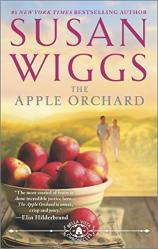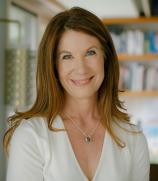Reading Group Guide
Discussion Questions
The Apple Orchard

1. The author uses nonlinear story structure (present day interspersed with scenes from the past) for several of her books. Here, she takes us back to WWII Denmark where we see Magnus Johansen as a young boy. Can the past, particularly one’s ancestry, influence the present? What are some examples of this in the book?
2. How would you feel if someone told you had a half sister you never knew about? Neither Tess nor Isabel ever had the chance to meet their father, Erik. Do you think this paternal tie is what pulls them together, or do you think the bonds of sisterhood go much deeper than a shared father?
3. Tess and Isabel couldn’t be more different. One is a brash, deal-making, world-weary redhead who can’t slow down and pursues lots of seemingly superficial friendships, and the other is a calm brunette who’d rather stay at Bella Vista creating farm-to-table meals with her extended family than venture out. This picture would certainly support the theory of nurture vs. nature. Yet, if you look more closely, you’ll find that the two sisters have more in common than meets the eye. What characteristics do they share?
4. The main character, Tess Delaney, is a provenance expert. She has an uncanny ability to find things, valuable things, from the past. At one point Tess even says, “I guess you could say finding treasure is in my blood.” When she finds the pink topaz lavaliere necklace that belongs to Annelise Winther --- a necklace that could allow Annelise to live in the lap of luxury for the rest of her days --- she’s disappointed that Annelise will not sell the necklace, but she’s notdevastated. Is there some part of Tess that wishes she had such a powerful connection to someone that no amount of money could replace it?
5. When did you know that Dominic Rossi was the right man for Tess? Was it right away, when he brushes the powdered sugar from the doughnut off her nose at work, or in the E.R., when he stays in the waiting room to help out Tess, a near-stranger? Or was there another moment?
6. Tess is very tightly wound. Why do you think she’s so keyed up all of the time? She’s very controlled in certain aspects of her life, but appears to have no control or organization at all over other parts. Sometimes people create their own obstacles to happiness, whether it’s out of a belief that they don’t deserve happiness or because they’re just not ready to be happy. Have you ever felt this way?
7. As writer Elin Hilderbrand says of this book, “The most storied of fruits is done incredible justice here...THE APPLE ORCHARD is sweet, crisp and juicy.” The apple has been a symbol of temptation, it has been known to keep one healthy and it’s the thing to give when currying a teacher’s favor. How does the author bring the themes of temptation, health and seeking acceptance into the book?
8. At the beginning of the story, Tess doesn’t appear to have a maternal bone in her body. And yet she’s surprisingly comfortable around Dominic’s kids. Do you think Tess will be a good stepmother and mother?
9. The author writes about the German occupation of Denmark during WWII, in particular the resistance movement known as the Holger Danske. Nearly 8,000 Jews found safe harbor thanks to Danish citizens like the fictional Magnus Johansen. Were you aware that such heroic efforts were taking place during that time? The more serious subject matter helps to put the struggles and conflicts of the present-day story into perspective. Did you enjoy how the author uses a historical event to frame a fictional narrative?
10. Susan Wiggs is an animal lover who has three dogs at present. In this story, Dominic has rescued a dog, Charlie. Do you think pet owners are more compassionate people? Would this be an instant check on the list of “things to look for in a partner” for you?
The Apple Orchard
- Publication Date: February 24, 2015
- Genres: Fiction, Romance, Women's Fiction
- Mass Market Paperback: 512 pages
- Publisher: Mira
- ISBN-10: 0778318338
- ISBN-13: 9780778318330








